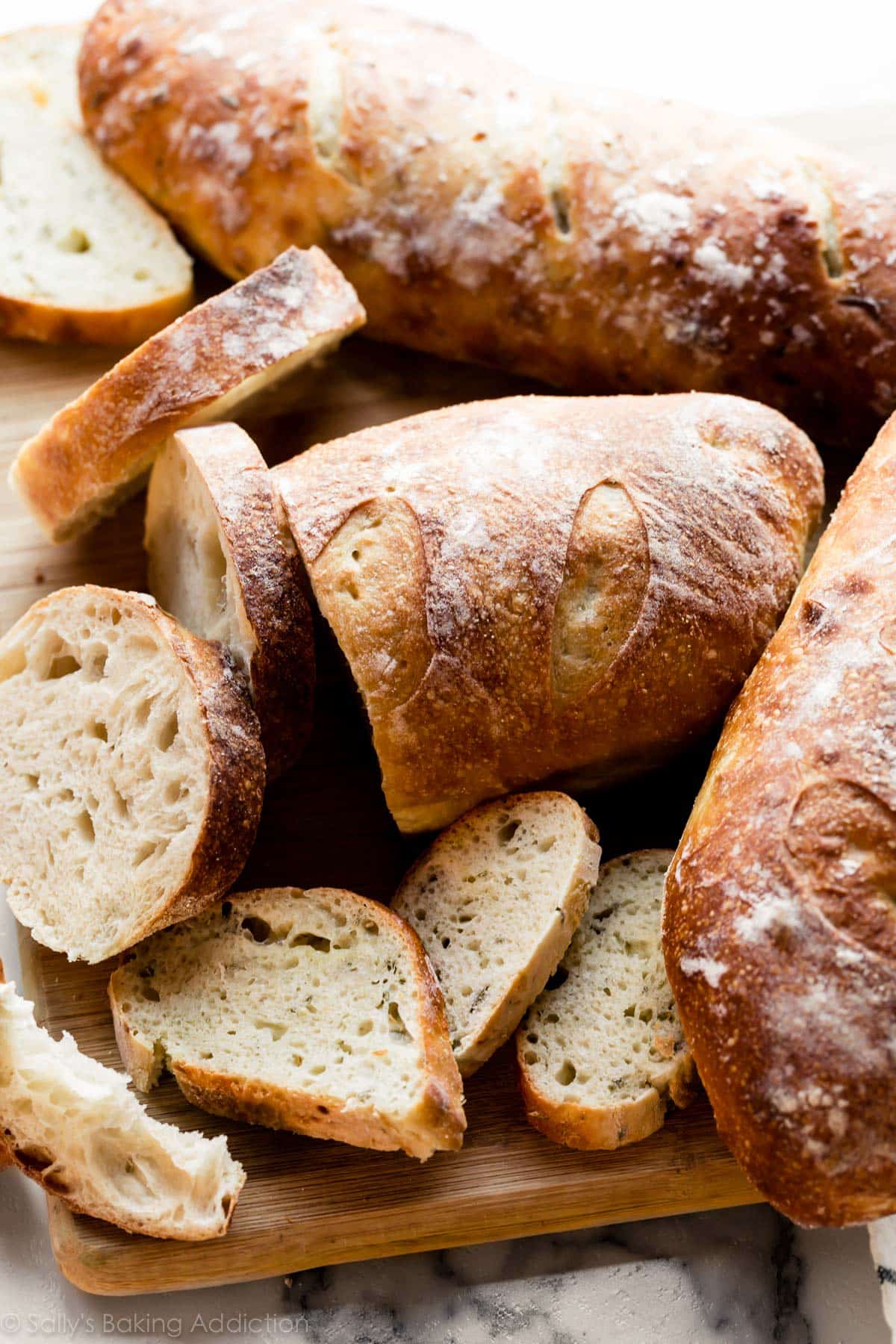
I’m thrilled to share my newest, most in-depth email series that I’ve ever offered.
(PS: I have two other free email series including Baking Made Easy and How to Bake a Perfect Cake!)
Fast Track to Bread Success
I ask readers this all the time: which recipes intimidate you the most? And 90% of the answers include “yeast breads.” I get it. I used to be terrified of baking homemade breads, too. They seemed SO complicated and out of reach, especially when recipes aren’t carefully explained. I was really frustrated.
So I taught myself. Over the course of 10 years, I went from shakily rolling out dough to confidently whipping up Nutella babka, croissants, and homemade bagels. All without hesitation.
Pictured above: Artisan Bread.
Let me send you on the fast track to homemade bread success.
Beginner’s Guide to Yeast
Today I’m presenting you with my Beginner’s Guide to Yeast Email Course.
This 5 day email series includes:
- in-depth baking with yeast tutorials
- yeast FAQs answered in easy-to-comprehend language
- my highest-rated bread recipes for beginners
- careful explanations so your fears of yeast finally subside
Some of this information is already on my website, but it’s never been delivered in an in-depth ongoing series with certain recipes grouped together and where you visualize them all. I’m really proud of the content I’ve put together in this series!
Sign Up Here
What’s The Process?
After signing up, you’ll receive 1 email per day for 5 days. After that, I’ll send you about 1 email per week with popular recipes as I update them with recipe notes and easier instructions. If you’re already on my email list, you won’t receive my Beginner’s Guide to Yeast series unless you sign up using the form above. (This series is in addition to what I regularly send out to you.)
This is all completely free. All that’s happening is me showing up in your inbox. You don’t need to do anything– no homework– just read, learn, and get excited to apply the information in your own kitchen. You can unsubscribe at any time.

Thank you so much for reading, following along, and trusting my recipes!



















I’m new to baking with yeast like I know absolutely nothing about it. But I want to learn how to make honey oat bread and I’ve never made any kind of bread before so I’m completely lost on what to do. I’ve googled some recipes but I’m gonna be doing this by hand without a bread maker so I need all the help I can get.
I’m new to your site and am so impressed with it. I feel like I’ve known you forever you are so down to earth. I made your 1 1/2 cup peanut butter cookies and I am sure I gained weight reading this instructions; and OH BOY! I DEFINITELY DID eating them. I’ve been singing your praises to all family & friends, even to Belfast N. Ireland.
I’ll be trying the “Oats” bread recipe before the weekend is over and after I toss my diet plans away. thanks for sharing and I look forward to getting your free
e-mails on Beginner’s Guide TO YEAST.
Hi Kathleen, thank you so much! I hope this series is helpful for you. It’s been popular with subscribers!
Thank you so much! I am looking forward to learning to not be afraid of yeast. I want to learn to bake bread so bad. So thank you again.
Thank you for your inspirational recipes and your many helpful hints.
Sometimes my yeast including cinnamon rolls are a flop…heavy, dense, or like hockey pucks. Sometimes that a perfect and rose beautifully. I do not change the recipe, I keep fresh yeast, use whole milk, bread flour but still it happens. Can humidity or altitude have a significant affect? I leave near the ocean.
When I visited my brothers in hot and humid Texas, nothing would rise.
Thanks
Hi Lisa, weather, humidity, and altitude can all play a big role in how yeasted doughs rise. Especially humid weather can cause dough to become very sticky and need some extra flour to make it workable. When doing this, be careful to add just enough so that it comes to a workable consistency, and not too much that it causes the dough to dry out or become overly dense (over working the dough can cause it to become dense, too). We wish we could help in regards to the high altitude, but have we no experience baking at high altitude. Some readers have found this chart helpful: https://www.kingarthurflour.com/learn/high-altitude-baking.html